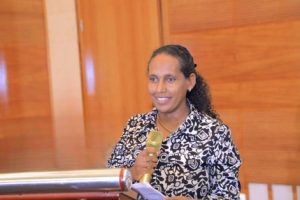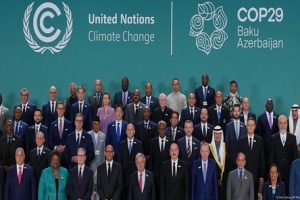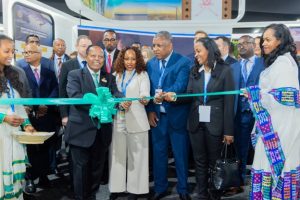
The massive and well coordinate corridor development initiative underway in Addis Ababa, the capital city of the country and in other major urban areas of the country has come up with many new elements that contribute immensely to the environment, health and socio economy of urban residents. The development favors the healthy, ecofriendly development of cities through widening green job opportunities, clean and safe urban features, among others.
Despite the economic and political challenges they face developing countries are also experiencing rapid rate of urbanization in recent years. If assisted by modern technology, design and elements that upgrade existing facilities like the ongoing corridor development activities here in Ethiopia, they are likely to become more habitable, smart and healthy to their inhabitants.
Many of the urban areas in developing countries started as small rural neighborhoods which later grew up to urban centers with the rapidly growing influx of migrants from near and far neighborhoods. Most of the migrants flock to the near urban areas in search of job opportunities or better living conditions. Yet, since they lack proper economic and skill capacities they often end up leading their lives in slum areas contributing the difficult level of shanty houses and neighborhoods. Such settlements lack master plan, facilities like water, electricity, roads and pedestrian walkways, drainage systems … etc. that are vital inputs for healthy and productive urban life.
Therefore the ongoing corridor development in various part of the country is an exemplary initiative that can provide multiples of solutions to these multifaceted pitfalls in urban settlements. One of the major reasons for the corridor development activities to spur more habitable urban environment is that they are predominantly green infrastructure that can create as many green jobs as possible.
Many similar green economic development activities underway in developing countries especially in Africa are also attributed to be factors that are streaming job creation in the continent.
According to a research report by Short List and FSD Africa, green economy is likely to create up to 3.3 million new direct green jobs across the continent by 2030, with the majority in the renewable energy sector, particularly solar. The study, the first in-depth analysis of workforce needs within major green value chains over the next five years, provides detailed forecasts for five focus countries, Democratic Republic of Congo (DRC), Ethiopia, Kenya, Nigeria and South Africa, which together account for more than a fifth (22%) of new jobs, and in key sectors such as renewable energy, e-mobility, agriculture, construction and manufacturing.
The research entitled “Forecasting Green Jobs in Africa” underscores the critical importance of a skilled workforce as an input accelerating African green industries, emphasizing the need for substantial investment in skills development and workforce mobilization. Moreover, the millions of jobs created in the green revolution will also contribute to the formalization of African economies, and the inclusion of whole populations in stable systems of remuneration, social security and taxation for the first time.
Based on the findings, the report also outlines key strategies required to cultivate Africa’s green jobs ecosystem: from targeted investments in high-potential sectors and value chains, the fostering of cross-sector collaboration among governments, private sector, educational institutions and investors, to the development of comprehensive support policies for green sectors. The report also calls for further analysis and granularity to labor demand key value chains to identify Africa’s current skilled labor supply and any potential gaps.
While some experts have suggested that up to 100 million green jobs may be created by 2050, this report takes a more near-term, sober, and realistic look at the job creation potential of just 12 specific sub-sectors or value chains and only until 2030. This more conservative analysis is intended to guide near-term investments and policy decisions among universities, workforce development actors, and government as we ensure the mobilization of the right skills and workforce to meet demand.
Significantly it predicts that 60% of the employment generated by the green economy over the coming six years will be skilled or white collar in nature. Within this, 10% constitute “advanced jobs” (highly skilled, requiring university degrees to fulfill), whilst a further 30% are projected to be “specialized” (requiring certification or vocational training) and 20% will be administrative in emphasis. Crucially, these job types tend to attract higher salaries and will, therefore, play a central role in spurring the growth of the middle class in countries hosting these high-growth sectors. Important also is the stability of the unskilled jobs created – which will offer ladders up the employment scale for candidates, whose employability will be enhanced by access to training and experience.
“There is a cross-sector effort across Africa to spur employment and sustainable development,” said Mark Napier, CEO of FSD Africa, “but stakeholders lack a shared, granular understanding of where the green jobs are going to come from. This report offers a methodology for forecasting green jobs which allows us to get practical about where we need to invest to make these jobs happen.”
“This is the first public report that takes seriously the notion that human capital and talent is important as both an input to green economic growth, and as a positive outcome – in the form of millions of new, direct jobs.” says Paul Breloff, CEO of Shortlist. “Now policymakers, and funders, and workforce developers need to step up to meet this near-term demand with effective training, apprenticeships, and job/skill matching, in hopes of achieving Africa’s green promise.”
BY STAFF REPORTER
THE ETHIOPIAN HERALD WEDNESDAY 25 SEPTEMBER 2024





